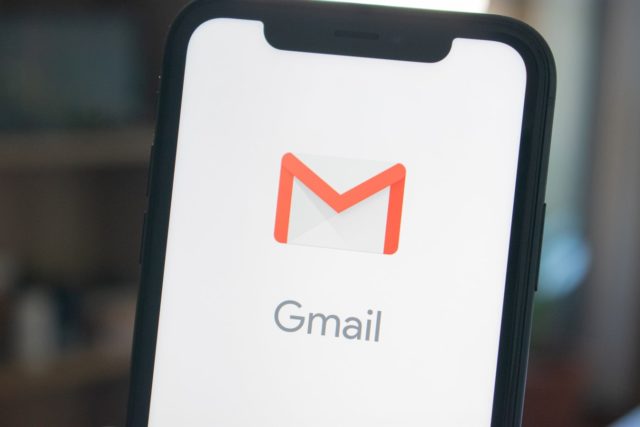Backing up Gmail emails and folders is easy and important. Gmail service is robust and well-supported by Google. However, Gmail, as a primarily web-based email solution is unavailable when you lose connectivity. Additionally, some people use their Gmail account (or a paid G Suite account) for business purposes that require some form of document storage and retrieval beyond what the free Gmail experience offers.
Use one of several different Gmail backup or archiving solutions to ensure you’re never without important messages, no matter the circumstances.
Table of Contents
Use Outlook Or Thunderbird To Download Gmail Emails
You can download Gmail as POP3 using Outlook or Thunderbird or another email client to download Gmail, which will store the messages locally in your email client. Keep messages in your email software, or better yet, copy important emails to a folder on your hard drive. You will need to enable POP3 access in your Google account settings under Forwarding and POP/IMAP. You will also find configuration instructions for setting up POP for Gmail in your mail client.
The only downside to POP3 loading is that if your computer crashes or your local folders become corrupt, you’ll lose the archive.
You can also set up Gmail in your email program as IMAP. This approach syncs your email from the cloud to your computer, so if all email disappears from Google’s (or another webmail provider’s) servers, your email client can sync with an empty server and delete local copies. If you access Gmail through IMAP, you can drag and drop these messages or save them to your hard drive as a backup. Of course, you would have to do this regularly – before problems arise on the server. More ”
Download The Archive From Google Takeout
To download a one-time archive of your entire Gmail account, visit the Google Takeout page.
1. Google Takeout and sign in with the credentials of the account you’re interested in archiving. You can only use Takeout with a logged-in account.
2. Select Gmail and optionally include other Google-related data that you want to export. A drop-down menu for Gmail lets you select specific labels to export if you don’t need all your old emails.
3. Click the Next button. Google offers three options that you must customize before proceeding:
- File type. Choose a file type that your computer can handle. By default, it gives you a ZIP file, but it also supports extracting to a gzipped tarball.
- Archive size. Select the largest file size your computer can handle for individual segments of a larger archive. In most cases, a limit of 2 GB is suitable.
- Delivery method. Tell Takeout where to place the complete archive file. Choose from a direct download link or (after permission) redirect directly to Google Drive, Dropbox, or OneDrive.
4. Google completes you after sending the email.
Archived Gmail files appear in MBOX format, which is a very large text file. Email programs like Thunderbird can natively read MBOX files. For very large archive files, you should use an MBOX-compatible email program instead of trying to parse the text file.
Google Takeout offers a view of your Gmail account at the time of viewing; it doesn’t support incremental archiving, so you get everything unless you limit yourself to specific labels. Although you can request to take out archives whenever you want, using Takeout for repeated data dumps is not efficient. If you need to pull data more often than once per calendar quarter, find an alternative archiving method.
Use The Online Backup Service
Spinbackup stores personal information also from Facebook, Flickr, Blogger, Google Calendar and Contacts, LinkedIn, Twitter, Picasa Web Albums, and similar services. Before you commit to paying for the service, you can give it a free 15-day trial.
Alternatively, try Upsafe or Gmvault. Upsafe offers up to 3GB of free storage, while Gmvault is an open-source project with cross-platform support and a robust developer community. More ”
Selective Archiving Using Data Rules
If you don’t need all of your emails, consider a more selective approach to email archiving.
Redirection: When you receive an email that you know you want to keep, forward it individually to an archive account elsewhere. To keep a copy of what you send, use the archive account email address in the BCC line.
Automatic redirection. Tell Gmail to copy or blind copy all emails received (or BCC all emails sent) to a specific email address.
IFTTT recipe: The popular website If This Then That creates recipes (basically scripts that state that when event X occurs, event Y should follow) so you can set up specific Gmail actions to trigger a specific activity. IFTTT recipes are especially useful when you need to set up your own rules and use resources outside of the Google ecosystem.
Forward to Evernote or OneNote. Set up an alias of me@onenote.com to import emails directly into an assigned OneNote notebook, or use your own Evernote email address to log messages to Evernote.
Think Before The Archive!
There is a cottage industry of backup services that suggests you need to back up your emails so they one day magically disappear forever.
While Google may delete your account for violating the terms of service, or a hacker may gain control of your account and delete some or all of the archive, these outcomes are relatively rare. As a provider of a robust email platform based on the cloud direction, Google does not tend to lose messages or accidentally delete accounts for no reason.
Although there may be a legitimate reason for backing up your account, backups are usually not necessary. They can open up your emails to even more data breaches when you connect other products and services to your Gmail accounting tools that may not be as secure as Google’s cloud platform.








